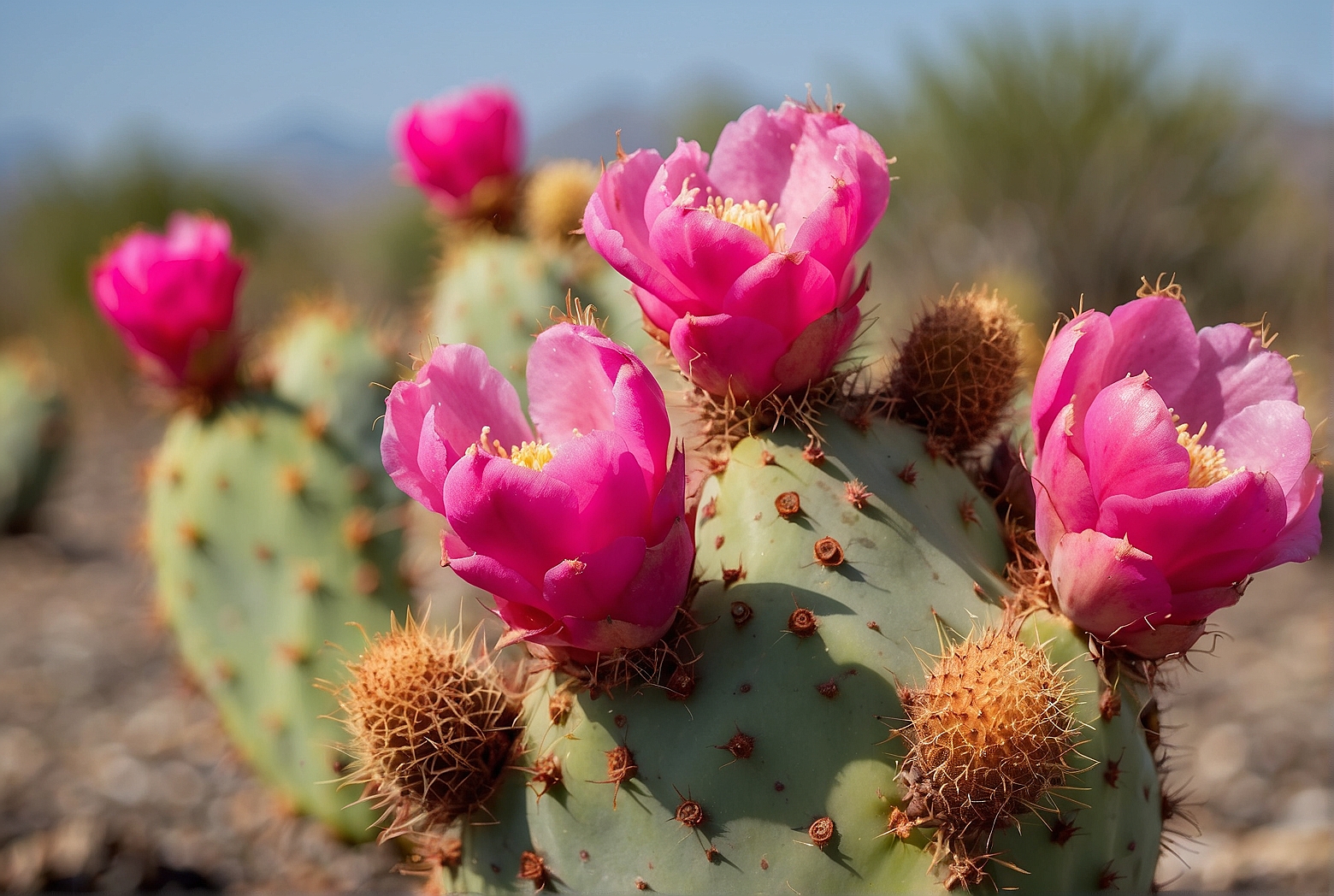With their iconic paddles and colorful blooms, prickly pear cacti are popular additions to gardens and homes However, these hardy succulents can sometimes develop issues with drooping or sagging pads If you’ve noticed your prickly pear cactus looking less perky lately, read on to learn the potential causes and solutions.
Common Causes of a Drooping Prickly Pear Cactus
Overwatering
The most frequent culprit behind a droopy prickly pear is overwatering As desert natives, these cacti prefer infrequent but deep watering If the soil stays constantly wet, the roots can rot, preventing proper uptake of water and nutrients. Pads will weaken and bend downward without firm support from healthy roots.
Underwatering
While less common, inadequate water can also lead to drooping. If the roots and inner tissues become completely desiccated, the pads lose turgor pressure and go limp. This occurs with severe or prolonged drought stress.
Sunlight Deficiency
Lack of adequate sunlight is another factor that can cause drooping pads Prickly pear cacti need at least 6 hours of direct sun daily for photosynthesis Without sufficient light energy, growth is stunted and pads can start to bend and sag.
Pests or Diseases
Sap-sucking pests like mealybugs, aphids and scale insects can gradually weaken prickly pear cacti, eventually causing drooping pads. Fungal diseases such as root, stem or pad rot can also lead to drooping as tissues are damaged.
Cold Weather Damage
Exposure to freezing temperatures can injure cells within prickly pear pads and stems. This freeze damage impairs their ability to maintain upright growth, resulting in limp, bending pads.
Improper Support
As new pads form and mature, they can bend downward under their own weight without proper structural support from the parent plant. Staking or trellising is often needed to keep pendant side pads growing upwards.
Normal Growth Habit
Certain prickly pear species and cultivars naturally exhibit a more trailing, creeping growth form. Their pads tend to bend down rather than remaining perfectly upright. This growth habit is not necessarily indicative of a health problem.
How to Revive a Drooping Prickly Pear Cactus
Adjust Watering Schedule
Carefully assess soil moisture and reduce watering frequency if overwatering is suspected. Allow the potting mix to dry out between waterings. Improve drainage if needed.
Provide More Sunlight
Gradually introduce the cactus to increased light exposure. Acclimate it over 7-10 days to prevent sun damage. Supplement with grow lights if inadequate natural sunlight.
Inspect and Treat Pests
Look closely for signs of mealybugs, scale and other sap-feeding pests. Remove with a soft brush or cotton swab dipped in alcohol. Apply insecticidal soap sprays if infestation is severe.
Improve Support and Prune
Add a trellis or bamboo stakes to prop up heavily bending pads. Prune off damaged, excessively drooping pads using sterile tools. Allow ends to callous before replanting cuttings.
Protect from Cold
Move potted cacti indoors or cover outdoor plants to shield from frost and freezing temperatures. Provide winter protection like insulating blankets or mulch.
Adjust Soil and Repot
Repot rootbound plants into containers with drainage holes. Use a well-draining cactus mix amended with perlite, pumice or gravel.
Fertilize Lightly
Apply diluted balanced liquid fertilizer during the growing season to provide a nutritional boost. Never overfertilize prickly pear cacti.
With a few simple fixes, most drooping prickly pear cacti can make a full recovery. Just be sure to address the underlying cause, whether it’s environmental, pest-related or due to the plant’s growth habits. Your dutiful cactus care will have those iconic paddles standing upright again in no time.
Choosing the Right Fertilizer
When you do fertilize, think minimalist. Overfeeding is the highway to harm. A balanced, low-nitrogen, or cactus-specific fertilizer will do the trick. Use little and often during the growing season—imagine adding seasoning to your favorite dish instead of a lot of sauce.
Direct application to the soil is your best bet. Dilute the fertilizer to half-strength to avoid shocking your prickly friend. And remember, watering before and after fertilizing ensures that the roots dont throw a fit.
Pest and Disease Management
Mealybugs and scale insects are the sneak thieves of the cactus world. With their sharp mouthparts, they take strength from your Smooth Prickly Pear. Look out for the telltale white fluff or brown lumps they leave behind. The party can also be crashed by phyllosticta fungus and other fungi that don’t like it when it’s too humid and smells like wet socks. These fungi throw black-spot bashes on your cactus pads, leaving unsightly scabs.
5 Things You Ought To Know About Your Prickly Pear Cactus (Opuntia Cacti). Care, Repot + More! 4K
FAQ
How do you fix a droopy prickly pear cactus?
Why is my prickly pear cactus falling over?
How to fix a limp cactus?
Why is my prickly pear cactus bending?
- A Complete Guide to Caring for Yuki Cherry Blossom Shrub - January 23, 2025
- Identifying Red Hot Poker Seeds: What to Look For When Harvesting Torch Lily Pods - January 23, 2025
- A Complete Guide to Harvesting Evening Primrose Seeds - January 23, 2025

